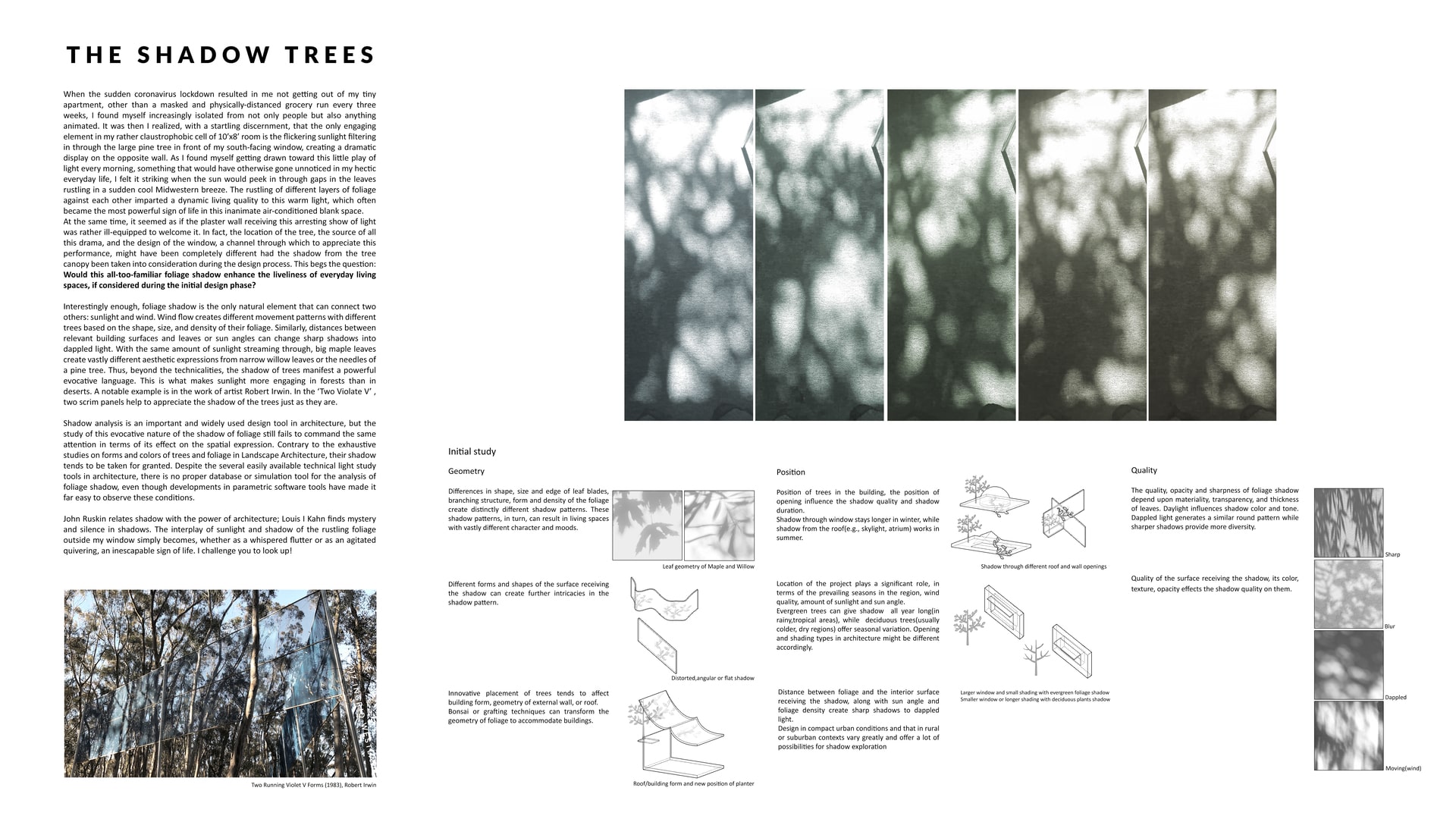Project Description
When the sudden coronavirus lockdown resulted in me not getting out of my tiny apartment, other than a masked and physically-distanced grocery run every three weeks, I found myself increasingly isolated from not only people but also anything animated. It was then I realized, with a startling discernment, that the only engaging element in my rather claustrophobic cell of 10’x8’ room is the flickering sunlight filtering in through the large pine tree in front of my south-facing window, creating a dramatic display on the opposite wall. As I found myself getting drawn toward this little play of light every morning, something that would have otherwise gone unnoticed in my hectic everyday life, I felt it striking when the sun would peek in through gaps in the leaves rustling in a sudden cool Midwestern breeze. The rustling of different layers of foliage against each other imparted a dynamic living quality to this warm light, which often became the most powerful sign of life in this inanimate air-conditioned blank space. At the same time, it seemed as if the plaster wall receiving this arresting show of light was rather ill-equipped to welcome it. In fact, the location of the tree, the source of all this drama, and the design of the window, a channel through which to appreciate this performance, might have been completely different had the shadow from the tree canopy been taken into consideration during the design process. This begs the question: Would this all-too-familiar foliage shadow enhance the liveliness of everyday living spaces, if considered during the initial design phase? Interestingly enough, foliage shadow is the only natural element that can connect two others: sunlight and wind. Wind flow creates different movement patterns with different trees based on the shape, size, and density of their foliage. Similarly, distances between relevant building surfaces and leaves or sun angles can change sharp shadows into dappled light. With the same amount of sunlight streaming through, big maple leaves create vastly different aesthetic expressions from narrow willow leaves or the needles of a pine tree. Thus, beyond the technicalities, the shadow of trees manifest a powerful evocative language. This is what makes sunlight more engaging in forests than in deserts. A notable example is in the work of artist Robert Irwin. In the ‘Two Violate V’ , two scrim panels help to appreciate the shadow of the trees just as they are. Shadow analysis is an important and widely used design tool in architecture, but the study of this evocative nature of the shadow of foliage still fails to command the same attention in terms of its effect on the spatial expression. Contrary to the exhaustive studies on forms and colors of trees and foliage in Landscape Architecture, their shadow tends to be taken for granted. Despite the several easily available technical light study tools in architecture, there is no proper database or simulation tool for the analysis of foliage shadow, even though developments in parametric software tools have made it far easy to observe these conditions. John Ruskin relates shadow with the power of architecture; Louis I Kahn finds mystery and silence in shadows. The interplay of sunlight and shadow of the rustling foliage outside my window simply becomes, whether as a whispered flutter or as an agitated quivering, an inescapable sign of life. I challenge you to look up!
